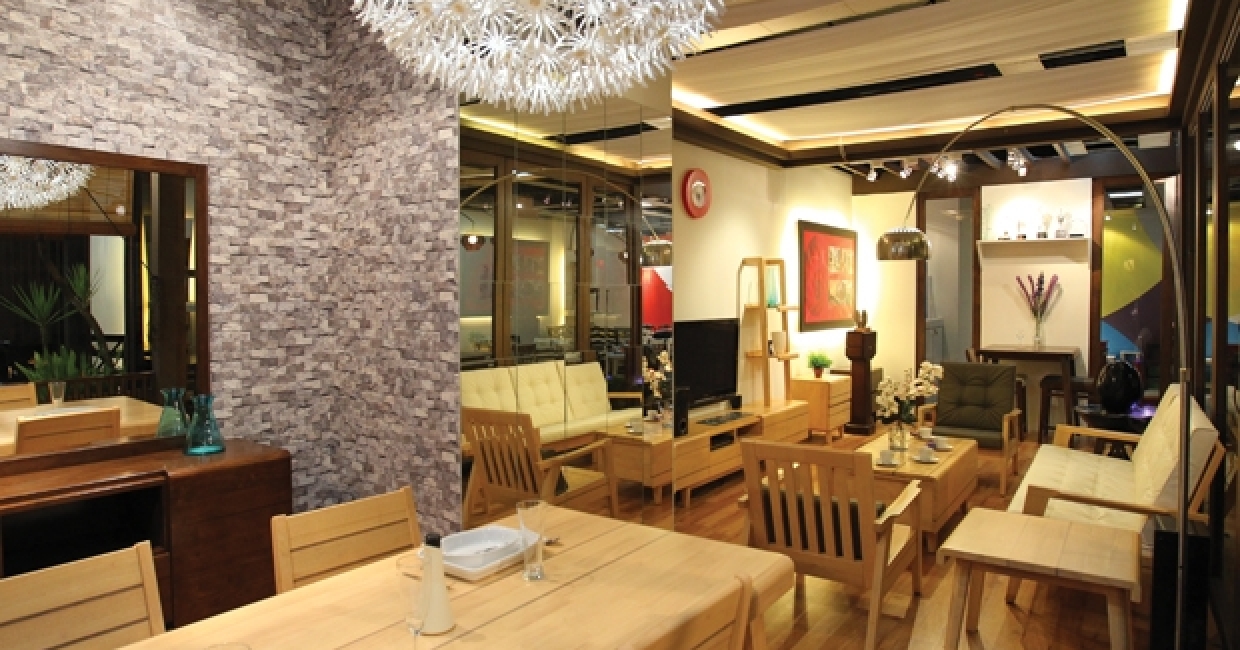This is the third time I've attended MIFF, Malaysia's premier furniture exhibition. Sure, it's a somewhat sprawling event, taking place through the twisting corridors of the Putra World Trade Centre (PWTC) and an almost-inconvenient satellite site, the MATRADE Exhibition and Conference Centre (MECC), both in northern Kuala Lumpur.
It's also far from the most innovative show in terms of product. Wood - principally rubberwood - is what Malaysia does best, and such a crucial part of the country's economy that significant Government backing goes into this sector of the furniture industry, perhaps eschewing other material opportunities.
Many UK buyers would agree that MIFF's product assortment has become somewhat homogenised over the years as its manufacturers increasingly put their effort into meeting the needs of markets closer to home - visitors from China and the ASEAN region are abundant, alongside a growing number of Indians and Pakistanis, and a fairly static number of Australians and Americans. However, there are still great, UK-suitable ranges to be found here - even if doing so requires a little tenacity.
Perhaps Malaysia's relative lack of innovation is to blame. I say 'relative', because the majority of the Far Eastern manufacturing nations - and China - are struggling to bring distinct design identities to the table, as they simply do not have the centuries of development enjoyed by the furniture culture in Europe.
International designer/manufacturer Klaus Kummer, of 2K Design and KDT International Co, delivered a seminar this year that asked how Malaysian furniture designers could go about building a design identity of their own, lamenting that it was fairly non-existent at present. He suggested that design students immerse themselves in their own Malaysian culture, through museums and tradition - then travel, and return having observed how other counties solve their design problems. He urged designers to create furniture not with aesthetics in mind, but with making it work better. Klaus - and the floor - agreed that such steps would require greater support from government, greater hands-on experience ... and a degree of financial selflessness from those involved, at every level.
Malaysia has some catching up to do with the likes of Singapore, Thailand and the Philippines, but I believe that there is enough home-grown fervour to do so, given time. The entries into the MIFF FDC competition (previously Ideation) provided a mere glimpse of this.
However, despite these faults, MIFF remains one of the world's best furniture fairs. I quantify 'best' loosely in terms of its services, reach, and sense of community - and in its potential. When UBM bought the show last year, I immediately saw how the event giant's strengths would benefit MIFF - with a massively enhanced visitor database, for starters.
However, I also feared that a change of ownership might mean and end to those near-intangible strengths that gave MIFF its identity - its people and methods, well honed through nearly 20 years of exhibition hosting.
It's now clear that UBM has ambitions for MIFF - including the addition of a new 30,000 sq m exhibition centre at the aforementioned MECC site. The presence of Malaysia's sizeable Muar Furniture Group this edition lent a great deal of validity to this venue (which was near-empty last year) and to MIFF's expansion plans overall, and gave visitors plenty of new faces to see on-site.
And, through it all, the approach remains the same. "Why change a winning team?" Says UBM Asia CEO Jime Essink, when I explain my prior concerns over the handover. He tells me that UBM has brought newer marketing methods to the show, and, obviously, wider reach - but that MIFF is already "very good at what it does". What it needs, he contends, is space - and he is confident that once the appropriate exhibition vacancies are established, MIFF will quickly become the undisputed - if not sole - furniture marketing platform in Malaysia.
That's not to mention SEAFIE, UBM's new September event, an import/export show designed to reach the upper-middle echelons of Malaysia's domestic market - and those of its ASEAN neighbours. According to Jime, there's a market for high-end German kitchens in South-east Asia, and SEAFIE will neatly cross over with the final day of UBM's Goliath Furniture China in Shanghai.
As it stands, MIFF is providing a good home to Malaysia's few design-oriented initiatives, as well as its best-established players. Given the evidence - and the Malaysian Government's lofty ambitions for the furniture sector - it will become even more so in coming years.



















